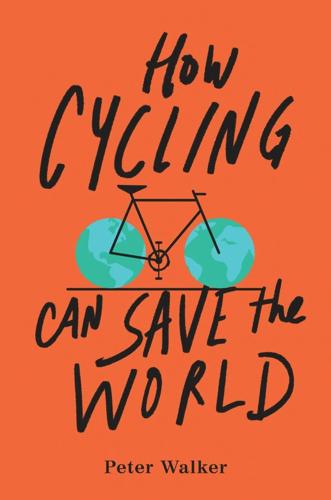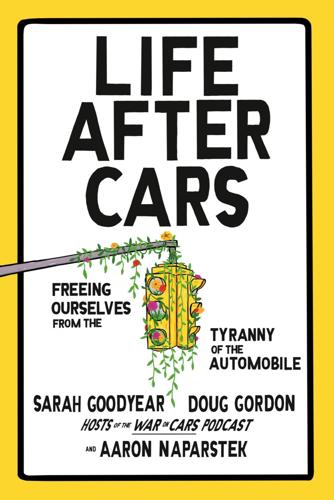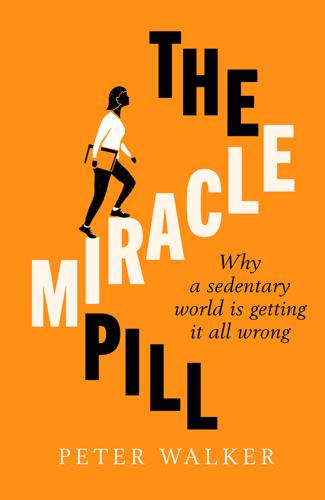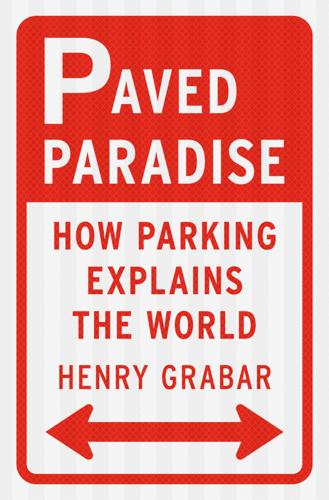Stop de Kindermoord
description: a Dutch activist movement that pushed for safer road conditions, notably for children
7 results

Bike Boom: The Unexpected Resurgence of Cycling
by
Carlton Reid
Published 14 Jun 2017
Many of the former radicals did, indeed, settle down and become parents, but that didn’t stop them agitating. Where the Provos left off, Stop de Kindermoord took over. IN 1971, Dutch motorists killed 3,000 people, 450 of whom were children. One of these was the child of Eindhoven-based journalist Vic Langenhoff, a senior writer on the national newspaper De Tijd. In anguish, he wrote an article headlined “Stop de Kindermoord”—“Stop the Murder of Children.” He urged that children be taken to school by bus rather than walk or cycle. His article hit a nerve, and urban activists were inspired to create the Stop de Kindermoord campaign organization. Led by Maartje van Putten, a 23-year-old new mother, the new body advocated not for school buses but protection from motorists.
…
This poignant campaign—along with the others that had preceded it—persuaded the authorities, drip by drip, to extend and improve the already extensive cycling infrastructure in some parts of the Netherlands. This persuasion was done at a face-to-face local level, Stop de Kindermoord’s Han van Spanje told me: We always started locally, not nationally. We were a campaign group, but also an information source. School governors would contact us and ask what to do to improve the safety outside their schools. We told them: “Contact the press. Talk to the traffic engineers.” Most of us were cyclists, but it wasn’t a cycling campaign. When you say you want to save kids, who can oppose that? Stop de Kindermoord organized demonstrations across the nation, usually with many children in tow.
…
Crucially, it didn’t just shout and moan—it also offered practical solutions. The protest group recruited traffic engineer Steven Schepel as technical advisor. He drew up child-friendly street designs specific to whichever local authority or municipality asked for them. Stop de Kindermoord did a pillar-style deal with the national government: it paid Schepel’s salary. (In 1989, Stop de Kindermoord changed its provocative name to Kinderen Voorrang—“Priority for Children”; in 2001, it was subsumed by the road safety campaign, Veilig Verkeer Nederland—“Safe Traffic Netherlands”—which continues to campaign for road safety. The Dutch Institute for Road Safety Research reports there were 621 road deaths in 2015, a third of whom were cyclists, but “relatively few children are killed in traffic.”)

How Cycling Can Save the World
by
Peter Walker
Published 3 Apr 2017
Then one of his older daughters, age ten, was hospitalized along with four friends after a speeding driver forced them off their bikes. It was time for action. On September 20, 1972, Langenhoff used a full page in de Tijd to announce a new road safety pressure group. The name was revealed in a dramatic banner headline: “Stop de Kindermoord,” or “Stop the Child Murders.” The organization was, he wrote, “trying to break through the apathy with which the Dutch people accept the daily carnage of children in traffic.” Langenhoff unleashed his months of grief and fury on “the criminals” in regional governments, who were busy redesigning the roads for the new fleets of motor vehicles without thought for those who, like Simone, had no choice but to walk or cycle.
…
Parents of little victims, worried parents of potential little victims: unite.”3 — That’s precisely what they did. Langenhoff’s article galvanized the fears and anger of millions of Dutch people who resented the sudden and unannounced tyranny of these anonymous, deadly metal boxes. Stop de Kindermoord turned swiftly into a major protest organization. Its members used innovative, direct-action tactics like staging mass “die-ins” and occupying busy roads, turning them into impromptu play streets. As Langenhoff stepped back from the front line, others took over. The group’s first appointed president was Maartje van Putten, a young student and mother who lived near one of Amsterdam’s new, busy arterial roads and watched in alarm from her apartment window every morning as young schoolchildren tried to cross it.
…
Now almost 30 percent of all trips in the Netherlands are made by bike, many more in urban areas. In Amsterdam, almost half of all city center journeys are on two wheels. In Utrecht this figure is 60 percent.5 The eventual Dutch method of separated bike lanes and tamed vehicle traffic has proved the model around the world. It’s possible none of this would have happened without Stop de Kindermoord. Most other European nations stuck with the supremacy of cars for several more decades, leaving bikes as the niche domain of hobbyists and die-hard devotees. In contrast, the Netherlands gradually, painstakingly reengineered its streets to allow everyday people to ride ordinary bikes for routine tasks, without notable danger or intimidation.

Life After Cars: Freeing Ourselves From the Tyranny of the Automobile
by
Sarah Goodyear
,
Doug Gordon
and
Aaron Naparstek
Published 21 Oct 2025
He called for the formation of a pressure group that would unite parents “who want to break through the apathy with which Dutch people accept the daily slaughter of children in traffic.” The name he suggested for this group was written right into his manifesto’s headline: Stop de Kindermoord, or “Stop the Child Murder.” Langenhoff’s powerful words attracted the attention of a young mother and experienced organizer in Amsterdam named Maartje van Putten, who became the first national president of the official Stop de Kindermoord organization. According to Van Putten, the perils of traffic had robbed pedestrians in general and children specifically of access to the streets. “We have lost something essential in our societies,” she said.
…
According to UNICEF, the Netherlands ranks first among all high-income nations in the world in terms of child well-being outcomes, which includes things such as mental well-being, physical health, and academic and social skills. The United States ranked just ahead of Bulgaria and Chile at the bottom of the list. New Zealand, Australia, Canada, and the UK weren’t that much farther ahead. It isn’t all because of the efforts of those early Stop de Kindermoord campaigners—a robust social safety net and a society that puts tight restrictions on guns certainly helps—but safe streets where children can be active and independent are an essential part of the story. “I Just Walk There” Many years after she fought for a bike corral in front of her school, Doug’s daughter, Galit, spent a couple of weeks in suburban Chicago, getting some quality time with her grandparents and seeing her best friends from summer camp before she started her sophomore year in high school.
…
Sam Balto, the physical education teacher and bike bus organizer in Portland, Oregon, believes that in a country as dominated by cars as the United States, efforts like the bike bus could be the spark that ignites the flame. “A bike bus is kind of this gateway drug to the safe streets for children movement,” he said. “If bike bus leaders play our cards right and do the right things to build this movement, this could be our generation’s Stop de Kindermoord.” 4 Cars Ruin Nature Everybody loved Barry the barred owl. That was what made it all so sad. For a brief flicker of time during the first year of the COVID-19 pandemic, Barry was the most famous owl in New York (a position later to be claimed by zoo escapee Flaco, a Eurasian eagle owl, but that’s another story).

The Miracle Pill
by
Peter Walker
Published 21 Jan 2021
This influx of motor vehicles brought a resultant drop in active travel, and a hugely increasing death toll as these new drivers interacted with the unprotected road users who still tried to brave the streets. A handful of places fought back. In the early 1970s, a prominent Dutch journalist, whose six-year-old daughter had been killed by a speeding driver as she cycled to school, launched a campaign called Stop de Kindermoord, or Stop the Child Murders,16 sparking a campaign of civil disobedience in the Netherlands which directly led to successive governments reshaping the nation’s roads. Denmark, too, saw mass protests slightly later. In most other countries, however, Buchanan’s vision of car-only personal urban transport largely came true, with significant knock-on effects for people’s physical lives, not all of them obvious.
…
This is the sort of thing which to many British politicians’ eyes would cross into the territory of social engineering. But it is worth remembering that much of the impetus for these changes came from the public. We saw earlier that the transport revolution in the Netherlands was sparked by the Stop de Kindermoord (Stop the Child Murders) road safety mass protests of the 1970s. Copenhagen saw similar scenes later in that decade and into the 1980s, pushing authorities into action. In contrast, the transformation of Finland’s public health was even more dramatic, but was also a notably top-down, almost paternalistic enterprise, led by scientists and researchers who enlisted the help of politicians to persuade an initially sceptical public of the need for change.
…
It found that 548 pedestrians were killed in the UK on pavements or verges between 2005 and 2018. 14 Peter Walker, ‘Reduction in passenger road deaths “not matched by cyclists and pedestrians” ’, The Guardian, 30 January 2020. 15 Colin Buchanan, Traffic in Towns (London: Penguin, 1964). 16 Vic Langenhoff, Stop de Kindermoord, De Tijd, 20 September 1972. Langenhoff wrote the article after his daughter Simone had been killed by a speeding car. The driver was fined the equivalent of £20. Then one of his older daughters was injured after being forced off her bike by a driver. Langenhoff said his new pressure group would try and ‘break through the apathy with which the Dutch people accept the daily carnage of children in traffic’, writing: ‘This country chooses one kilometre of motorway over 100 kilometres of safe cycle paths.

Building the Cycling City: The Dutch Blueprint for Urban Vitality
by
Melissa Bruntlett
and
Chris Bruntlett
Published 27 Aug 2018
“The idea was to give the street level to cars, and to put people underground in the metro system, and they would all travel at high speeds,” says Dinca. “This would be the city of the future.” The blowback was swift and monumental, leading to the founding of dozens of grassroots activist groups, the largest and most persuasive being Stop de Kindermoord (“Stop Child Murder”), formed in response to an eponymously titled, full-page editorial in De Tijd (“The Times”) by journalist Vic Langenhoff. Langenhoff—grieving the death of his six-year-old daughter, killed while cycling to school one morning—was understandably enraged at the 150-guilder ($50 USD) fine imposed on the driver, as well as a flawed street design that prioritized speed over human life.
…
He points out no one is going to be against preserving and protecting lives, but the argument for better street design and reducing the number of cars in our cities, which would do far more to extend and enrich lives than building a few protected bike lanes, can get lost when the focus is on one particular outcome. Fertig asserts that until attitudes around motor vehicle collisions change in North America, it will be impossible to achieve the Vision Zero goal across the continent. He notes at the time of the Stop de Kindermoord movement, around 450 Dutch children annually were dying as a result of car crashes, whereas in the United States of America, that rate is currently hovering at almost three times that number: a shocking 1,200 children. While the US population today is admittedly much higher than that of the Netherlands in the 1970s, if Vision Zero is to truly take hold, it can no longer be acceptable to sit back in complacency while over a thousand kids suffer horrific deaths each year with little or no consequence for the drivers at fault, all for the sake of convenience for the automobile.

Road to Nowhere: What Silicon Valley Gets Wrong About the Future of Transportation
by
Paris Marx
Published 4 Jul 2022
Amsterdam, which is today known as a bicycle mecca, was not spared from this desire to transform and to modernize by making way for the car, and by 1971, 3,300 people were killed annually from cars, including 400 children.5 In 1975, the traffic death rate in the Netherlands was 20 percent higher than in the United States.6 Naturally, residents demanded action. Among the groups that were formed to oppose the remaking of the city for the automobile was Stop de Kindermoord, which translated to “stop the child murder.” The group’s name was reminiscent of the evocative language that was seen on US streets in the 1910s and 1920s. Its members held demonstrations for bicycles, closed roads to allow children to play, and even occupied the sites of car crashes. They gained the ear of people in power, then received public funding and helped to develop policies to deemphasize the automobile’s place in Dutch transport policy.
…
See bicycles Seattle, WA, ride-hailing services in, 99 Securities and Exchange Commission (SEC), 138 Sedran, Thomas, 129–30 self-checkout, 194–5 self-driving cars accidents with, 132–5 Autonomous Land Vehicle project, 119 Brin on, 114–5 challenges of, 126, 129–30 environmental dilemmas and, 131–2 Google, 6 Intermodal Surface Transportation Efficiency Act (1991), 119 Kalanick on, 116 Navlab autonomous vehicles, 119–20 Ng on, 126 pedestrians and, 127 pricing of, 127–8 pulp science fiction and, 118 Radio Corporation of America (RCA) and, 118 software for, 122–3 speed and, 123–4 Tesla’s Autopilot system, 137–8 Tsukuba Mechanical, 119 VaMoRs, 119 Sepulveda Pass, 141 Shanghai Gigafactory (Tesla), 83 Sheffield, UK, docked bikeshare system in, 170–1 Sheller, Mimi, 158, 207 Shell Oil City of Tomorrow, 2 Shill, Gregory, 30 shipping industry, 49 shut-in economy, 196–7 Sidewalk Labs, 228–30 Silicon Valley, 37–8, 44–5 skates (platforms), 146–7 Skyports, 154–5 Small Business Investment Company, 55 smart homes, 60–1 smartphone apps, 55, 181, 194–5 Smiley, Lauren, 196 Social Bicycles (SoBi), 167–8 Socialist Left Party, 209 social media, 61–2 SolarCity, 55, 143, 188 solar panels, Musk on, 188–9 Southern State Parkway, 26 Soviet Union, 39 space program, 48 SpaceX, 55, 144, 148, 150–1 speed limiter referendum, 19–20 speed limits, 18–20 Sputnik I satellite, 39, 45 standardized containers, increasing use of, 49 Standard Oil of California, 21 Stanford Industrial Park, 40 Stanford Research Institute, 54–5 Stanford University, 39–40, 55, 120 Stark, Tony, 70 Starley, John Kemp, 160, 162 Starship Technologies, 172, 173–5, 176–7 Stop de Kindermoord, 205 streetcars, 12–3, 15, 21, 92, 160 “subscriber city,” 197 suburbanization, 23 suburbs, 12–3 superhighway plan (Detroit), 22 supply chains, 50 Surface Transportation Policy Project, 141 surge pricing, for ride-hailing services, 100 Swisher, Kara, 116–7 Taft-Hartley (1947), 112 taxi medallions, 104–5 taxi services about, 95–6, 101–2, 104–5 industry regulation and, 107, 110–1, 185 Taylor, Isaac, 122 TCP/IP protocol, 50 TechGirls Canada, 228–9 tech industry development of, 9–10 growth of, 4, 180–5 speed of technological innovation, 48 technological solutionism, 59 Tesla, 5–6, 55, 63–4, 70, 72, 73, 82–4, 85–6, 116, 137–8, 143, 147, 158–9, 188, 189, 190 Tesla, Nikola, 70 Texas, Interstate Highway System in, 140 Thacker Pass, NV, 79, 226 Thiel, Peter, 46–7 Thrun, Sebastian, 121 Toronto, Canada, 228–30 Toyota, 116, 121, 122 train system in France, 220 in North America, 218–9 transportation bus system, 21, 215, 219 computerized planning systems for, 130 flying cars, 151–2, 159 history of, 7 jitneys, 89–91, 92, 108–9 Navlab autonomous vehicles, 119–20 present-day dominance of, 34–5 taxi services, 95–6, 101–2, 104–5, 107, 110–1, 185 three-dimensional vs. two-dimensional, 145 train system, 218–9, 220 tunnels for, 144–51, 154–5, 158–9, 189 vertical takeoff and landing vehicle (VTOL/eVTOL), 152–5, 157, 158 walking as primary means of, 12 Trudeau, Justin, 79–80, 228 Trump, Donald, 78 Tsukuba Mechanical, 119 tunnels, for transportation, 144–51, 154–5, 158–9, 189 Turner, Fred, 41, 43, 52 Turner, Matthew, 141–2 Uber about, 115 acquisition of Jump, 166–8 Advanced Technologies Group (ATG), 133, 134–5 benefits of, 94 campaigns for, 103 changed from Ford Fusion to Volvo XC90 SUVs, 134–5 compared with taxi services, 95–6 core business of, 93 costs for, 107–8 Covid-19 and, 108 customer base for, 100–1 divisions of, 153–4, 184 driver pay for, 103–4, 107 effect on traffic of, 100 employee classification for, 111–2 founding of, 181 Greyball and, 110 growth of, 97, 105–6 industry regulation and, 101–2, 107, 110–1, 112–3, 156, 174, 185 loss of money by, 106–7, 184–5 marketing by, 158–9 media representation of, 94–5 micromobility services of, 166–9 model of, 102–3 in New York City, 98–9 origins of, 92–3, 109 pricing for, 184 promises made by, 186 pulls out of China, 152 refocus on ride-hailing and food delivery services, 184–5 safety record of, 134, 135–6 in San Francisco, 97–8 walking vs., 191 Uber Air, 153–4, 155, 157, 159 Uber Copter, 155–6 Uber Eats, 184–5 Uber Elevate, 152, 154, 159 unemployment rate, 95–6 unions, for taxi drivers, 101–2 United Kingdom (UK) docked bikeshare system in, 170–1 ecommerce in, 193 University of Technology Sydney, 75 University Paris-East, 169–70 Unsafe at Any Speed (Nader), 27–8 Untokening collective, 218 Urban Challenge, 120 urban renewal strategy, 26 Urry, John, 32–3, 143 US Air Force, 50 US Department of Defense, 50 US-Japan Semiconductor Trade Agreement (1986), 45 US National Labor Relations Act, 102 VaMoRs, 119 Vansintjan, Aaron, 222 Vasquez, Rafaela, 132, 135 Vélib’ bikeshare system, 210 venture capitalists, 186–7, 199 vertical takeoff and landing vehicle (VTOL/eVTOL), 152–5, 157, 158 Very Far Away from Anywhere Else (Le Guin), 202 Vietnam War, 39, 40, 43, 49 VoiceOver, 175 Volkswagen, 77, 78, 129–30 Volocopter, 152 Volvo XC90 SUVs, 134–5 Walker, Jarrett, 59, 142–3, 181–2 walking, as means of transportation, 12, 191 Washington, DC, ride-hailing services in, 99 Waterfront Toronto, 228–9, 230, 231 Waymo, 133, 138, 186 web 2.0, 57 WeWork, 181, 182–3 white people, mortgages and, 29 Who Killed the Electric Car?

Paved Paradise: How Parking Explains the World
by
Henry Grabar
Published 8 May 2023
All along the streets of our cities, and in a good many public plazas and parks as well, we had consigned a vast amount of public space to the long-term storage of cars. In Europe, where car ownership rates were higher, reform had also taken off. In Amsterdam, overrun with traffic in the 1970s, a group of mothers said “Stop de Kindermoord” (“Stop Killing Children”) and started a movement. In 1975, the Netherlands experienced 20 percent more car deaths per capita than the United States; by the twenty-first century, the Dutch had 60 percent fewer car deaths per capita. Amsterdam had been transformed from gridlock into a city so oriented toward people (and people on bicycles) that it no longer served as a useful point of comparison—too unrealistic.